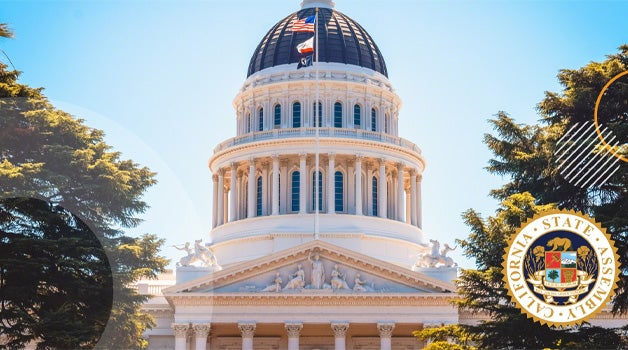I recently attended a great edition of the Active & Intelligent Packaging Industry Association (AIPIA) World Congress and the Sustainable Packaging Summit hosted by Packaging Europe in Amsterdam. The pulse at both conferences was electric as the industry prepares for 2024.
The Sunrise of 2D Codes
It was no surprise that the transition to 2D codes was a prominent theme at AIPIA World Congress this year. The question is no longer if brands should transition from 1D to 2D codes but rather when and how. Several factors are driving this step change.
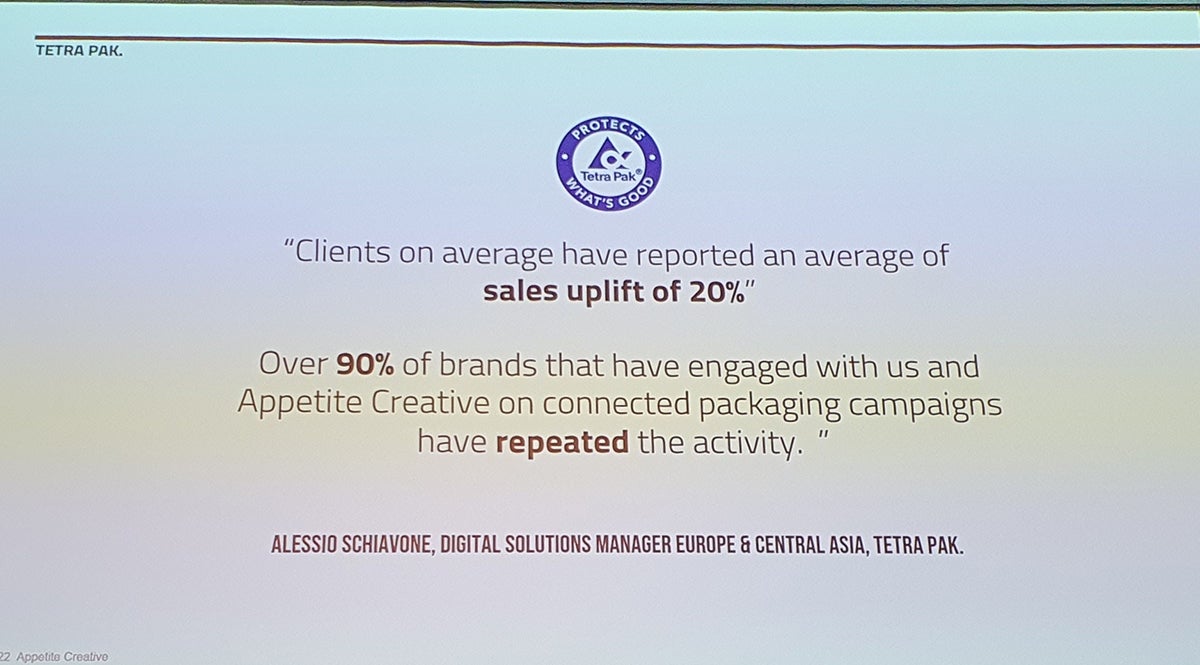
Jenny Mora Stanley from Appetite Creative demonstrated proof of concept for the transition to 2D codes and the adoption of connected packaging at AIPIA World Congress. Ms. Stanley is the head of a leading creative agency that creates connected packaging experiences. According to Ms. Stanley, brands that adopt connected packaging experience a 20%-30% sales increase as a norm.
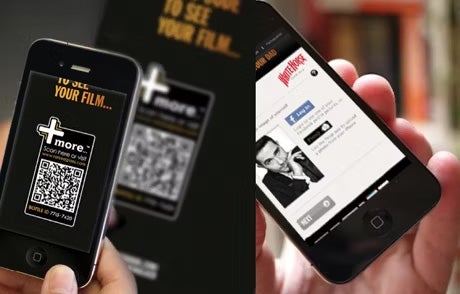
I can back this statement up from my own experiences with connected packaging. The very first campaign my previous company, EVRYTHNG (acquired by Digimarc in 2022), launched was for multinational beverage company Diageo. The campaign resulted in an impressive 72% sales uplift in the two weeks leading up to Father’s Day, plus an earned media value five times higher than investment.
That's the good news. The bad news is that great results are not simply achieved by snapping a QR code. "It is all about the experience,” as Amazon's Güneri Tugcu pointed out on a panel about the push for global consumer trust at AIPIA World Congress.
Having contributed to the development of a digital twin platform to facilitate direct-to-consumer experiences, and now serving as VP of Innovation at Digimarc, one of the world’s foremost authorities on digital twins and a leader in product digitization, I agree fully with Mr. Tugcu’s statement. Leading consumers to a generic brand website is an absolutely wasted opportunity. Today consumers expect dynamic, personalized experiences.
Ms. Stanley illustrated a mix of successful connected packaging experiences in her presentation, including a partnership with Elopak for Don Simon. The experience focused on gamification — providing consumers an opportunity to earn points every time they engaged with the product to encourage recurring connections.
Digimarc’s experience has been similar, with our most successful campaigns including an element of gamification with an opportunity to earn customer loyalty points.
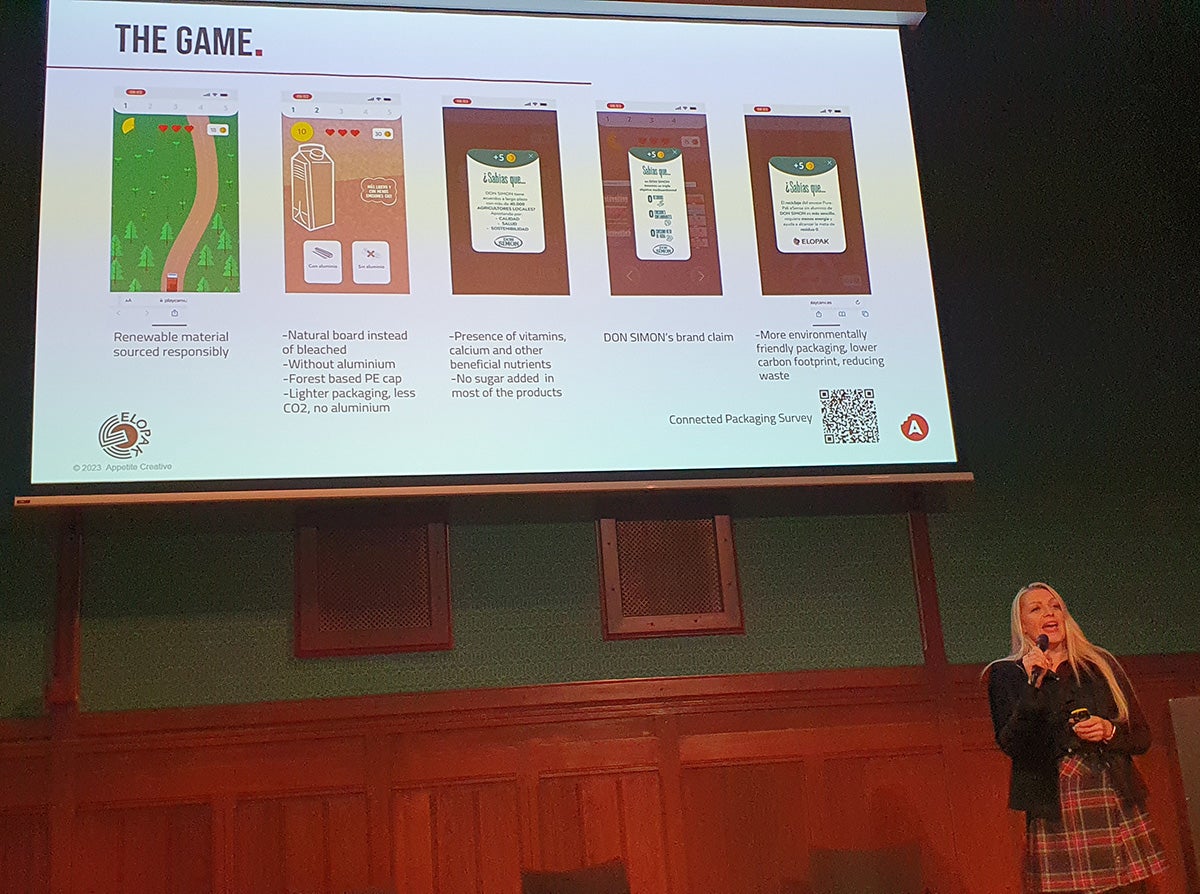
While a lot of the focus at AIPIA World Congress was on consumer engagement — unleashed by the move to 2D — during my presentation, I reminded attendees that Sunrise 2027 is also an opportunity to transition to a single data carrier for consumer engagement, supply chain tracking, and Point of Sale (PoS) systems. Aside from using QR codes, interoperability across these use cases calls for a single or common digital identity encoded in the QR code.
This is exactly what the GS1 Digital Link standard addresses and why brands should adopt it today to ensure a successful and future-proofed 2D strategy. GS1 Digital Link, and specifically the readiness of the digital ecosystem, was also a popular subject at AIPIA World Congress. Craig Stobie of Domino Printing Sciences demonstrated how printers are ready for GS1 Digital Link QR codes at scale, including support for serialization. Digimarc demonstrated how our new consumer engagement platform Digimarc Engage is built with GS1 Digital Link at its core.
Looking above and beyond 2D codes
With the industry trend to move to 2D codes, it would be easy to jump to the conclusion that QR codes will be the "one code to rule them all.” However, I’d be remiss not to call out the many industry experts that demonstrated while QR codes tend to be the carrier of choice to connect with consumers, many innovative use-cases require other types of data carriers (also known as digital tags).
A carrier to help the visually impaired
A prime example is the "Accessible QR code" that Zappar, Unilever, Royal Institute for the Blind, and Connected Experience Consulting presented at AIPIA World Congress. The Accessible QR code helps visually impaired people locate products on the shelf. The technology developed by Zappar works by adding a dash-dash-dot pattern around a standard QR code. The pattern can be picked up by a mobile phone from more than one meter away — guiding the consumer towards the product. Combine this with a GS1 Digital Link QR code and a multi-purpose system is created. In this instance, the GS1 Digital Link can derive important product information for the visually impaired, deliver consumer engagement experiences, or interact with a PoS system in a retail checkout scenario.
Digimarc plays an active role in this incredible use case, providing digital product identities to Unilever for the brand's Accessible QR codes and other smart packaging use cases.
Omron also presented an example of 2D digitization beyond the QR code in its new anti-mixing (parts matching) solution. Typically, factory automation processes in the CPG (Consumer Packaged Goods) industry rely on 2D Datamatrix codes to ensure the contents in the packaging matches the information on the container. However, as CPG brands experience increasing pressure to reduce plastic waste, the real estate on product packaging is also reduced.
As an example, in an effort to reduce plastic waste, product manufacturers are eliminating the outside wraps on containers. As a result, there is very little space to print a 2D Datamatrix code. Other drawbacks with using this type of code in the factory automation process include the need for a precise line of sight to read small codes and the risk of confusion for consumers. As consumers become more accustomed to scanning QR codes, there is a strong probability they will mistakenly scan internal factory automation codes — leaving them confused or disappointed by the experience.
This is where Omron and Digimarc have developed a new system based on Digital Watermarks: Datamatrix codes are replaced by digital watermarks that have the advantage of being covert, machine-readable, immutable, ubiquitous, redundant, and secure.
Watermarks to reducing plastic pollution
Once again, recycling and sustainable packaging were important topics at both the Sustainable Packaging Summit and AIPIA World Congress. The effort to reduce plastic waste is a top priority for brands and governments. A critical element of the solution is to improve the sortation efficiency and reliability of plastic recycling. Digital watermarks are integral to the solution. Digimarc Recycle, including Digimarc digital watermarks, provides a powerful platform to support more accurate recyclability of plastics and other materials, solving an important technological aspect of this complex challenge. Among the benefits of digital watermarking for this application is that our technology enables the identification of plastics that were previously too difficult to identify, such as carbon black packaging, and separating food-grade and non-food-grade containers. Digimarc digital watermarks are at the center of a pan-European initiative addressing the plastics recycling crisis. Driven by AIM - European Brands Association and powered by the Alliance to End Plastic Waste, over 160 companies and organizations from the complete packaging value chain have joined forces for the Digital Watermarks Initiative HolyGrail 2.0 — now rolling out in several countries.
Beyond optimizing recycling and the sortation of plastics, the roll out of Extended Producer Responsibility (EPR) was discussed. EPR legislation places the responsibility for managing the product's end-of-life on the producer. Using digital identities on product packaging should provide more accurate EPR reporting but this is another example of where a single 2D code would not work. Packages are severely damaged when entering sortation facilities and require high redundancy to be able to sort at high speed. When combined — GS1 Digital Link QR codes and digital watermarks — consumers receive important recycling instructions while sortation facilities achieve efficient sortation and reporting.
NFC for brand integrity
One more tag I’d highlight from the conference is an integration we built with EM Microelectronics. This integration illustrates how secure NFC tags deliver secure identities to a level that visual carriers are unlikely to ever achieve, while still leveraging the GS1 Digital Link standard. Indeed, while a QR code can be easily copied, secure NFC tags are capable of generating encrypted and variable payloads with a strong cryptographic key (AES). This makes NFC tags un-copiable unless the symmetric key is leaked. This signature can then be added as a custom attribute of a GS1 Digital Link and verified by a supporting cloud service.
We demonstrated this by integrating EM’s echo-v technology with the Digimarc Illuminate platform to securely verify the encrypted digital identity that the tag emits while driving a web authentication experience for consumers and brand inspectors. Echo-v tags are one of a kind because they are dual-frequency tags, meaning they can support RAIN RFID, also known as, UHF EPC RFID, for supply chain use-cases and secure NFC for consumer engagement. Combine this with a standard Digital Link QR code to receive 3 carriers-in-one that facilitate different use cases and maximize reach via a single digital twin.
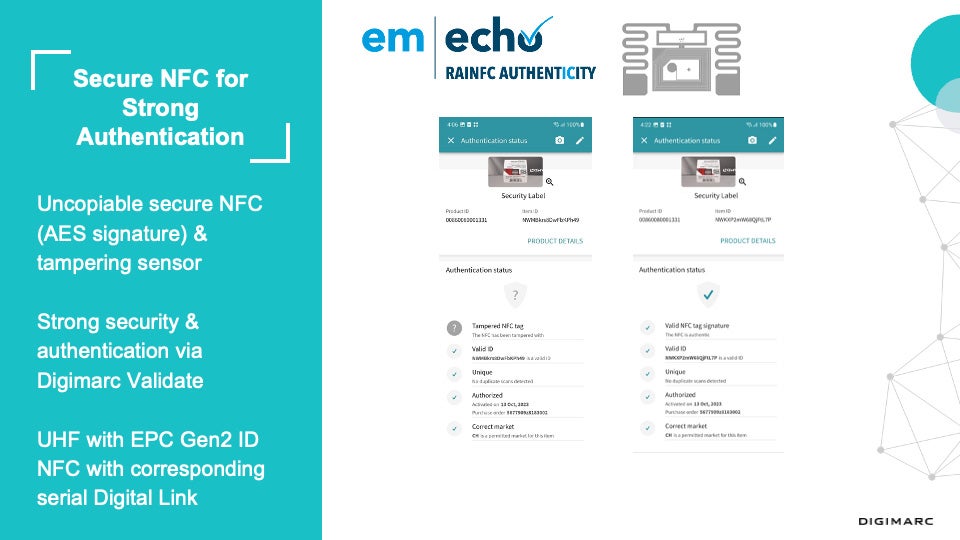
The energy felt at the conferences in Amsterdam was one of collaboration and innovation. I believe the takeaways highlighted here will propel the industry forward in 2024. Proven ROI, standards, industry-wide initiatives, and upcoming regulations are driving the adoption of connected packaging.
Will your brand be next?
